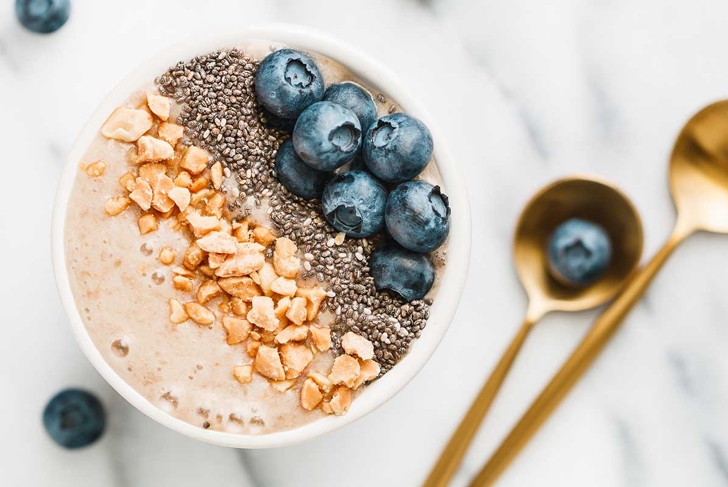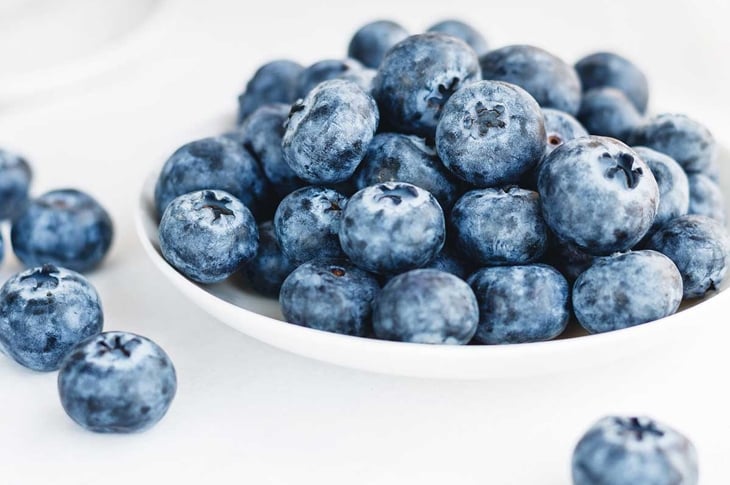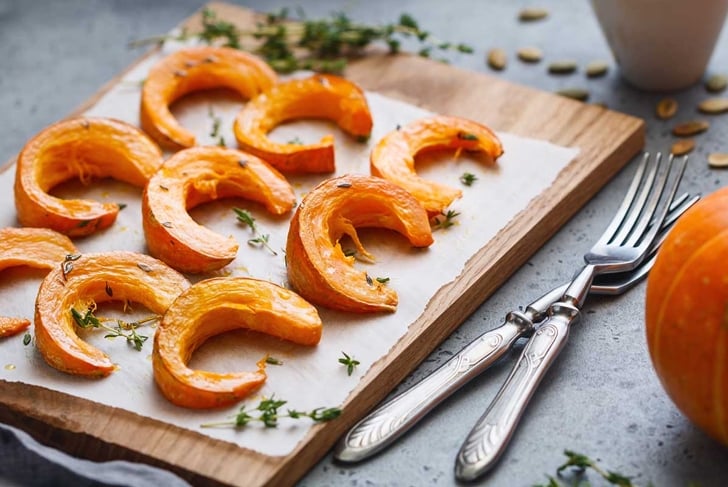
A lot of hype surrounds a group of compounds found in food called antioxidants. They’re touted as disease fighters and memory protectors and even the antidote to aging. What are antioxidants? Why are they important? And where can you get some? Read on!
When talking about healthy eating, antioxidants are often included in the discussion. But how do we make sure we’re getting enough?
Antioxidants are naturally found in foods and help protect the cells in our bodies from damage caused by free radicals. We’re all exposed to cell damage; some of this occurs naturally as we age, and other damage is caused by a variety of environmental factors, including breathing in air pollution such as cigarette smoke, or pesticides.
Research suggests that cell damage over time can lead to increased risk of diseases such as cancer, heart disease, and diabetes. For many years, nutrition research has suggested that consuming greater amounts of antioxidant-rich foods (especially fruits and vegetables) may help prevent disease. So, give your immune system a boost and incorporate these top 10 antioxidant-rich foods into your everyday meals.
Blueberries

Blueberries are among the fruits highest in antioxidants because of their many phytochemicals. Blueberries contain anthocyanins, catechins, and other flavonols, helping give blueberries their bright colour and powerful abilities.
Use them
Add blueberries to yogurt, pancakes, oatmeal, cereal, smoothies, healthy muffins, or even salads. Use our Recipe Finder to discover a bounty of delicious blueberry recipes.
Broccoli and other cruciferous vegetables

The antioxidants found in broccoli and other cruciferous vegetables such as Brussels sprouts, cabbage, bok choy, and kale have anti-inflammatory effects on our bodies. Several human studies have found links between high intake of cruciferous vegetables (five or more servings per week) and reduced risk of various cancers (breast, colorectal, lung, and prostate).
Fun facts
- Broccoli was first cultivated about 2,000 years ago in what is now Italy.
- Broccoli is rich in vitamin C—1 cup (250 mL) of broccoli has about the same amount of vitamin C as an orange.
- Brussels sprouts grow best in cool temperatures; after their first frost they become sweeter.
Winter squash and orange vegetables

Winter squash, including pumpkins, and other yellow, orange, and red vegetables are rich in alpha and beta carotene. Our bodies convert these carotenoids into vitamin A, which plays a critical role in immune health.
Meal idea
Spaghetti squash makes a great pasta substitute. Serve it up with your favourite pasta sauce for a tasty and healthy meal, or check out some of our delicious spaghetti squash recipes.
Legumes

Legumes, including kidney beans, black beans, lentils, chickpeas, and split peas, contain antioxidants from a variety of phytochemicals including flavonoids and sterols. In addition to carrying powerful antioxidants, beans are also a great source of fibre and protein. Research has found associations between higher intakes of legumes and decreased risk of several cancers, including stomach, colorectal, and kidney.
Versatile legumes
Legumes are a great plant-based source of protein. Incorporate beans into your vegetarian or vegan meals for a nutrient boost. Try them in bean burritos, lentil tacos, honey garlic chickpeas, or split pea soup, or follow one of our tasty bean recipes.
Dark leafy greens

Dark leafy greens, such as spinach, kale, lettuce, and collard greens, are abundant sources of antioxidants, being rich in both carotenoids and flavonoids. They’re also great sources of fibre, vitamin C, and iron, all important for supporting overall health. Research suggests that consumption of leafy dark green vegetables may have protective effects against some cancers, including lung cancer.
One a day
Aim to have one serving of a leafy dark green vegetable each day.
Garlic

Garlic belongs to the allium family, which also includes onions, shallots, leeks, scallions, and chives. Its unique pungent flavour and aroma makes garlic a great addition to most savoury meals. Allicin is a bioactive compound, released when chopped or crushed, that contains antimicrobial properties and plays an important role in decreasing inflammation. Some research studies have suggested protective effects of allium vegetables on stomach and colorectal cancers.
A veggie boost
Cook your veggies with garlic for an extra boost. In a skillet, sauté any dark leafy green, such as kale or spinach, with coconut oil, minced garlic, and salt and black pepper to taste.
Fun fact
Garlic retains most of its power when added in during the last few minutes of cooking; this helps preserve its nutrient content and flavour.
Green tea

Tea contains many powerful polyphenols and antioxidants, including catechins and flavonols, and the amino acid L-theanine (unique to green tea). Consumption of green tea and other teas have been linked to reduced risk of heart disease, obesity, and even some cancers. Several studies have found associations between green tea consumption and reduced risk of breast, lung, and prostate cancers.
Fun fact
Matcha is a green tea powder made from shade-grown green tea leaves, and is rich in antioxidants. It can also be incorporated into baked goods, salads, and smoothies, or enjoyed in a latte. Try some of our marvellous matcha recipes.
Grapes

Grapes are loaded with antioxidants known as polyphenols, including resveratrol, that may help reduce the risk of heart disease and cancers and help boost our immune health. The vitamin, potassium, and fibre content in grapes offer additional protective qualities.
Great grape tips
Sliced grapes add a sweet boost to any salad, while frozen grapes are deliciously cooling on hot summer days. (Another surprising way to eat grapes? Chocolate Dipped Grapes.)
Tomatoes and other red/pink fruits and veggies

Tomatoes, grapefruit, red cabbage, papaya, and watermelon all have something in common: they’re rich in lycopene. Many studies have found lycopene to be protective against prostate cancer particularly. Aside from being rich in lycopene, these red/pink fruits and vegetables are all great sources of vitamins A and C, potassium, and other protective nutrients.
1/2 your plate
Filling half your plate with fruits or veggies at each meal is a great way to boost your antioxidant intake throughout the day. Think smoothie bowls, muffins, salads, entrées, and even desserts boosted by the flavour and health-giving benefits of fruits and veggies.
Flaxseeds and other nuts and seeds

Flaxseeds are an excellent source of fibre, omega-3 fatty acids, phytoestrogens (lignans), and antioxidants. Research suggests associations between flaxseed consumption and reduced risk of cancers including prostate and breast; however, more research among human populations is needed. Either way, flaxseeds and nuts are great sources of healthy fats, protein, and fibre.
Add ’em
Using ground flaxseeds is a better way to ensure your body absorbs their abundant nutrients. Add flaxseeds to oatmeal, smoothies, baked goods, yogurt, and greens.
Bottom line
Eating more plant-based meals with lots of fruits and veggies is a great way to boost your antioxidant intake and support overall good health. When planning your next meal, think about incorporating some of these top 10 antioxidant-rich foods.




